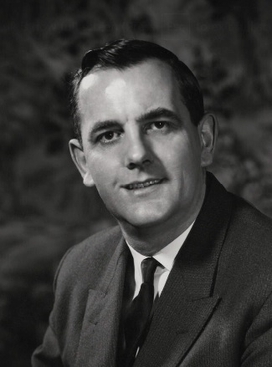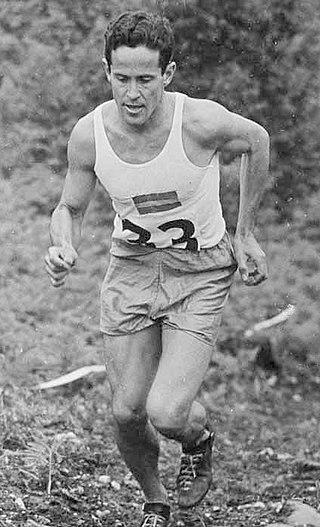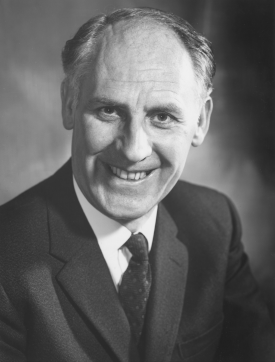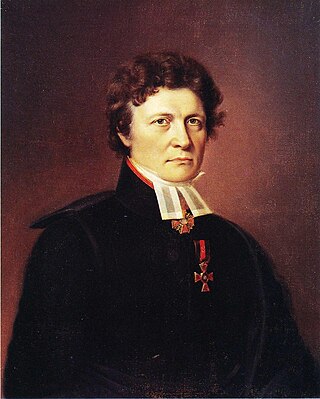
Gold medals are awards typically given for the highest achievement in a field or competition.

Gold medals are awards typically given for the highest achievement in a field or competition.

Svenska Dagbladet, abbreviated SvD, is a daily newspaper published in Stockholm, Sweden.

The Nobel Prize in Physics is an annual award given by the Royal Swedish Academy of Sciences for those who have made the most outstanding contributions to mankind in the field of physics. It is one of the five Nobel Prizes established by the will of Alfred Nobel in 1895 and awarded since 1901, the others being the Nobel Prize in Chemistry, Nobel Prize in Literature, Nobel Peace Prize, and Nobel Prize in Physiology or Medicine. Physics is traditionally the first award presented in the Nobel Prize ceremony.

Lists of awards cover awards given in various fields, including arts and entertainment, sports and hobbies, the humanities, science and technology, business, and service to society. A given award may be found in more than one list. Awards may be given by a government agency, an association such as the International Cricket Council, a company, a magazine such as Motor Trend, or an organization like Terrapinn Holdings that runs events. Some awards have significant financial value, while others mainly provide recognition. The lists include awards that are no longer being given.

The Royal Astronomical Society (RAS) is a learned society and charity that encourages and promotes the study of astronomy, solar-system science, geophysics and closely related branches of science. Its headquarters are in Burlington House, on Piccadilly in London. The society has over 4,000 members, known as fellows, most of whom are professional researchers or postgraduate students. Around a quarter of Fellows live outside the UK.

Dame Susan Jocelyn Bell Burnell is an astrophysicist from Northern Ireland who, as a postgraduate student, discovered the first radio pulsars in 1967. The discovery eventually earned the Nobel Prize in Physics in 1974; however, she was not one of the prize's recipients.

Sir John Theodore Houghton was a Welsh atmospheric physicist who was the co-chair of the Intergovernmental Panel on Climate Change's (IPCC) scientific assessment working group which shared the Nobel Peace Prize in 2007 with Al Gore. He was lead editor of the first three IPCC reports. He was professor in atmospheric physics at the University of Oxford, former Director General at the Met Office and founder of the Hadley Centre.

Jacob Aall Bonnevie Bjerknes was a meteorologist. He is known for his key paper in which he pointed the dynamics of the polar front, mechanism for north-south heat transport and for which he was also awarded a doctorate from the University of Oslo.
Royal Institute or Royal Institution may refer to:

John Cromwell Mather is an American astrophysicist, cosmologist and Nobel Prize in Physics laureate for his work on the Cosmic Background Explorer Satellite (COBE) with George Smoot.

Sir Basil John Mason was an expert on cloud physics and former Director-General of the Meteorological Office from 1965 to 1983 and Chancellor of the University of Manchester Institute of Science and Technology (UMIST) from 1994 to 1996.

Kenneth Charles Freeman is an Australian astronomer and astrophysicist who is currently Duffield Professor of Astronomy in the Research School of Astronomy and Astrophysics at the Mount Stromlo Observatory of the Australian National University in Canberra. He was born in Perth, Western Australia in 1940, studied mathematics and physics at the University of Western Australia, and graduated with first class honours in applied mathematics in 1962. He then went to Cambridge University for postgraduate work in theoretical astrophysics with Leon Mestel and Donald Lynden-Bell, and completed his doctorate in 1965. Following a postdoctoral appointment at the University of Texas with Gérard de Vaucouleurs, and a research fellowship at Trinity College, Cambridge, he returned to Australia in 1967 as a Queen Elizabeth Fellow at Mount Stromlo. Apart from a year in the Kapteyn Institute in Groningen in 1976 and some occasional absences overseas, he has been at Mount Stromlo ever since.

William Oscar Guernsey Grut was a Swedish modern pentathlete. He competed at the 1948 Summer Olympics in London, where he won the gold medal in modern pentathlon. Grut was a multiple Swedish swimming champion and received the Svenska Dagbladet Gold Medal in 1948.

Raymond Hide was a British physicist, who was a professor of physics at the University of Oxford and, since 2000, senior research investigator at Imperial College, London.

Timothy Noel Palmer is a mathematical physicist by training. He has spent most of his career working on the dynamics and predictability of weather and climate. Among various research achievements, he pioneered the development of probabilistic ensemble forecasting techniques for weather and climate prediction. These techniques are now standard in operational weather and climate prediction around the world, and are central for reliable decision making for many commercial and humanitarian applications.

Louise Harra is a Northern Irish physicist, born in Lurgan, County Armagh, Northern Ireland. She is the Director of the World Radiation Centre of the Physical Meteorological Observatory in Davos (PMOD/WRC) and affiliated professor at the Institute of Particle Physics and Astrophysics of ETH Zurich.

The Gold Medal of the National Eisteddfod of Wales is awarded annually in three categories for excellence in Fine Art, Architecture, or Craft and Design.

Trevor John McDougallFAGU is a physical oceanographer specialising in ocean mixing and the thermodynamics of seawater. He is Emeritus Scientia Professor of Ocean Physics in the School of Mathematics and Statistics at the University of New South Wales, Sydney, Australia, and is Past President of the International Association for the Physical Sciences of the Oceans (IAPSO) of the International Union of Geodesy and Geophysics.

Gustaf Gabriel Hällström was a Finnish scientist. He was active in several fields, contributing to the establishment of an astronomical observatory in Turku as well as initiating the earliest systematic meteorological observations in Finland. His children were ennobled in recognition of his achievements.
The Medal for Noble Deeds is a Swedish medal intended to honour personal courage in a civilian context. It is used to honour not only the noble deed of lifesaving but also courage and presence of mind. Since its inception in 1832, the medal has been awarded in gold in two sizes and in silver in one size.